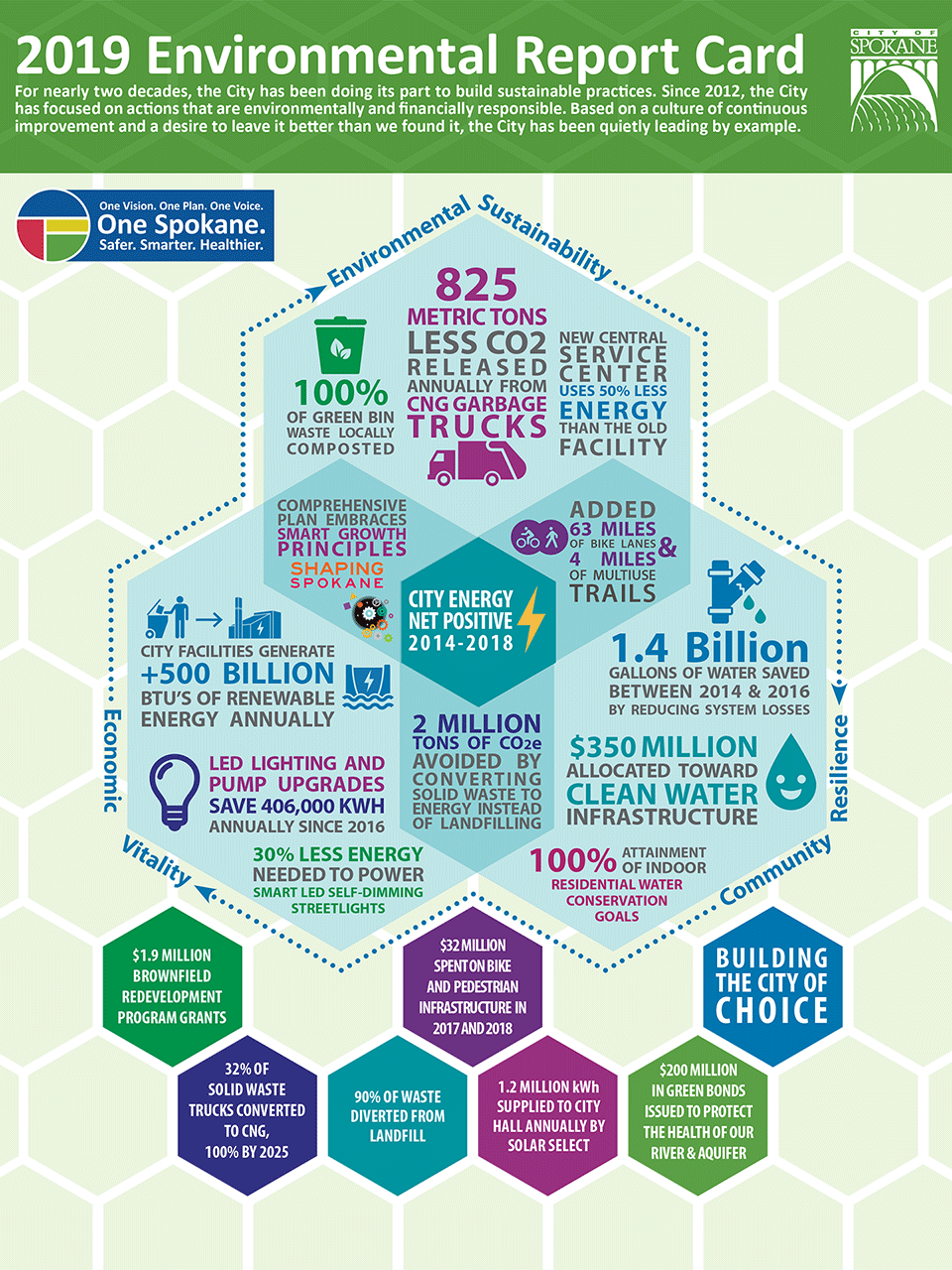
Our Earth, Our Home, Our Health
Catherine Olsen, Environmental & Sustainability Manager, 509.625.6968
Monday, April 22, 2019 at 12:28 p.m.

Updated May 6, 2019
The newest addition to the Spokane skyline is the 120-foot arch of the University District Gateway Bridge. The bridge crosses the railroad viaduct and provides a bicycle and pedestrian path to connect the north and south portions of the University District.
There are many reasons to be excited about this bridge, but on Earth Day, we celebrate its ability to help us make healthier choices—for ourselves and our environment. The bridge is part of a significant investment that the City has made over the last two years in bicycle and pedestrian infrastructure; we directed some $32 million into improved ways to get around by bike and by foot in 2017 and 2018.
Take a little broader look, and we find that since 2012, the City has added 63 miles of bike lanes and 4 miles of multi-use trails.
As we celebrate Earth Day, we once again wanted to reflect back on the measures that improve our sustainability, our resiliency, and our environment. Our work helps our Earth, our own community, and our personal health. Every day at the City, we are focused on decisions that are both environmentally and financially responsible, and we are making a difference.
We have updated our Environmental Report Card, which tracks our environmental results going back to 2012. It’s important to measure our outcomes and provide the community with information that is meaningful.
Besides the bike and pedestrian infrastructure, the updated report card highlights that:
- We are now powering City Hall through our participation in Avista Utilities’ Solar Select project, which includes a new solar farm in Lind, Washington. The solar program is providing us with 1.2 million kWh annually of green power.
- We are continuing to make progress in the area of water conservation. Last year, we launched our SpokaneScape program that encourages homeowners to replace thirsty turf with native plants, mulch, and low-water irrigation. We gave out $10,500 in utility bill credits through this program in 2018 and are gearing up for more.
- We have continued to refine our analysis of the City’s generation and use of energy. We have confirmed once again that we generate more energy than we use, even factoring in the fuel we use for our large fleet of fire trucks, police cars, snow plows, and garbage trucks. Our evaluation confirms this statistic for the years 2014 through 2018.
Take a look at our Report Card to see more impressive results. But that’s just the beginning.
We are continuing to work on sustainability goals included in the joint Mayor and City Council Strategic Plan. The plan highlights the smart use of water resources for economic growth and efforts to put renewable energy resources to work in our community, among other goals.
For example, out at the Waste to Energy (WTE) Facility on the West Plains, we are taking a new look at how we can leverage that asset to serve as part of Spokane’s leadership in the emerging green economy.
Over the last 25 years, we have quietly and efficiently disposed of our community’s solid waste at WTE, while generating enough renewable electricity to power 13,000 homes per year. Waste to Energy is recognized worldwide as a key strategy for renewable energy and low greenhouse gas emission solid waste disposal, but it also creates opportunities for metals recovery, heat and electricity from steam, and reuse of resulting ash.
By rethinking our entire waste stream in terms of sustainable materials management we can create a local circular economy: There is no garbage, only secondary resources as feedstocks, fueling our local economy.
Land, water, power and people: these are among Spokane’s greatest assets. Every day, we are challenged to make sure we manage those assets for the good of our environment, our community, and our future generations.
Happy Earth Day!

